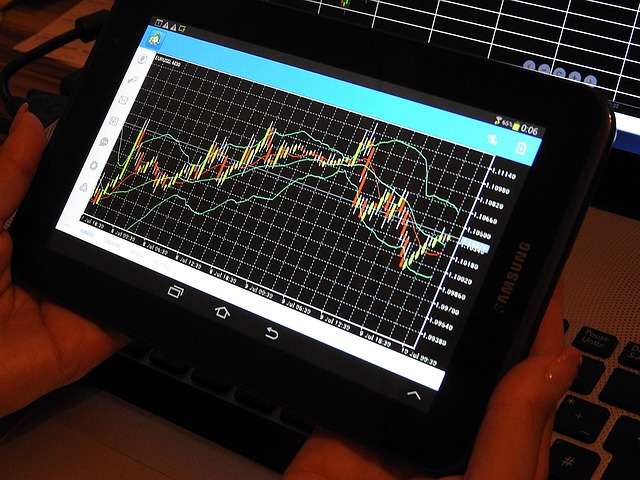Crypto Trading Bots
In the rapidly evolving world of cryptocurrency, leveraging advanced technology such as AI-powered crypto trading bots has become essential for traders aiming to optimize their strategies, reduce emotional decision-making, and maximize profits. The integration of AI in trading systems offers the ability to analyze vast amounts of market data in real-time, identify profitable trading signals, and execute trades at speeds unattainable by humans. This technological shift has democratized access to sophisticated trading tools, enabling both novice and professional traders to participate more effectively in the volatile crypto markets. Moreover, as the market matures, the sophistication and capabilities of trading bots continue to evolve, incorporating features like multi-strategy deployment, adaptive learning, and enhanced security protocols.

Understanding Crypto Trading Bots and AI Integration
Crypto trading bots are automated software programs designed to execute buy and sell orders based on predefined rules or learned algorithms. Traditional bots primarily rely on static rule-based systems, analyzing technical indicators such as moving averages, Relative Strength Index (RSI), MACD, Bollinger Bands, and volume metrics. While effective during trending markets, these static algorithms often struggle during unpredictable or sideways markets, leading to false signals, whipsaws, and potential losses. They are also limited in adapting to sudden market shifts, requiring manual intervention for adjustments.
AI-driven bots, however, leverage cutting-edge machine learning techniques—including deep learning, reinforcement learning, natural language processing (NLP), and neural networks—to dynamically adapt to changing market conditions. These models analyze a multitude of data sources, learn from historical patterns, and improve their decision-making over time, resulting in increased resilience in volatile environments. They also incorporate sentiment analysis derived from news feeds, social media platforms, macroeconomic indicators, and on-chain data—providing a comprehensive view of market sentiment that can influence trading decisions. This holistic approach allows AI bots to anticipate market moves more accurately and execute trades with higher precision.
The core strength of AI integration lies in its capacity for continuous learning and pattern recognition. For example, reinforcement learning enables bots to optimize trading strategies through trial and error, rewarding successful trades and penalizing poor ones, which leads to progressively refined decision frameworks. Natural language processing (NLP) aids in interpreting unstructured data such as news headlines, social media posts, or regulatory announcements, providing real-time sentiment insights that can precede market movements. Additionally, AI models can analyze multiple timeframes simultaneously, identify complex correlations, and adapt to different market regimes—ranging from bull runs to bear markets—thus offering a significant edge over traditional static algorithms.
Choosing the Right Platform for AI Crypto Trading Bots
The success of deploying AI trading bots hinges critically on selecting a robust exchange platform with comprehensive API support, reliable data feeds, and stringent security measures. Major exchanges such as Binance, MEXC, Bitget, and Bybit are popular choices due to their extensive liquidity, high API rate limits, and developer-friendly environments. Below is an in-depth overview of these platforms:
- Binance: Recognized as the world's largest crypto exchange, Binance offers a comprehensive API supporting spot, futures, margin trading, and staking. Its vast liquidity and extensive trading pairs facilitate sophisticated strategies. The API supports REST, WebSocket, and FIX protocols, enabling real-time data streaming and order execution. Binance's security measures include API key permissions, IP whitelisting, and two-factor authentication (2FA). Their API documentation is detailed, supporting custom bot development, and they frequently update features to improve performance. Registration link: Binance Registration.
- MEXC: Offers a user-friendly interface with extensive API documentation supporting spot and futures trading. Its global user base and diverse token listings make it suitable for arbitrage, market-making, and other advanced strategies. MEXC emphasizes low-latency connections, providing WebSocket APIs for live data feeds and order management. Security features include API key encryption and withdrawal whitelist management. The platform is optimized for high-frequency trading environments. Sign up here: MEXC Registration.
- Bitget: Known for derivatives and margin trading, Bitget’s API support enables complex automated strategies involving leverage, hedging, and multi-asset management. The API supports REST and WebSocket interfaces, facilitating real-time order execution and data streaming. Security measures include API key encryption, withdrawal whitelist, and regular security audits. Their platform emphasizes community growth through referral and affiliate programs, which can be leveraged for strategic networking: Bitget Registration.
- Bybit: Specializes in derivatives trading with robust API support suitable for high-frequency automated trading. Features include WebSocket streams for real-time market data, REST APIs for order placement, and risk management tools. Its security suite includes API key management, IP restrictions, and regular audits. Bybit's comprehensive API documentation supports custom bot development and strategy testing: Bybit Referral.
Selecting the right platform depends on your specific trading objectives, asset preferences, and technical expertise. Consider factors such as liquidity depth, API stability, available trading pairs, security protocols, and community support when making your choice.
Implementing and Optimizing AI Trading Strategies
Deploying effective AI crypto trading bots requires meticulous planning, rigorous testing, and continuous optimization. Key practices include:
- Parameter Setting and Risk Management: Establish clear parameters such as stop-loss, take-profit, position sizing, and leverage limits. AI algorithms can adapt these parameters based on market volatility, but human oversight remains essential to prevent over-leverage and excessive exposure. Implement dynamic risk controls like trailing stops, adaptive position sizing, and drawdown limits to respond to market fluctuations effectively. Incorporating volatility-adjusted position sizing, where trade sizes are scaled according to current market volatility, can significantly reduce risk during turbulent periods.
- Backtesting and Paper Trading: Before deploying live capital, simulate strategies using historical data via platforms like TradingView, Binance Testnet, or custom simulation environments. Backtesting helps identify weaknesses, optimize parameters, and prevent overfitting. Complement this with paper trading—simulated trading in real market conditions without risking actual funds—to ensure strategies are robust and capable of handling live volatility. Regularly review backtest assumptions to account for changing market dynamics and avoid over-optimization.
- Performance Monitoring and Adjustment: Continuously analyze key metrics such as win rate, profit factor, maximum drawdown, and trade frequency. Use dashboards and analytics tools (e.g., TradingView, Coinigy, or custom dashboards) to visualize performance trends. Regularly review and adjust algorithms based on evolving market regimes—such as shifting from trending to ranging markets—to maintain profitability and reduce risk exposure. Implement automated alerts for significant deviations or performance thresholds to facilitate timely intervention.

Enhancing Trading Outcomes with Signal Integration
Combining AI trading bots with external market signals greatly enhances decision accuracy. Trusted signal providers analyze macroeconomic trends, news events, sentiment shifts, and technical setups to generate actionable insights. Integrating these signals into your automated system—via APIs or manual inputs—can improve timing and precision. Examples include:
- Crypto sentiment analysis platforms like Santiment, LunarCrush, and The TIE providing real-time social sentiment scores and community activity metrics.
- News aggregators such as CoinDesk, CryptoSlate, and The Block delivering macroeconomic, regulatory, and technological updates.
- On-chain metrics tools like Glassnode, Nansen, and CryptoQuant providing blockchain activity insights, fund flows, and wallet behavior patterns.
Feeding these signals into your AI system allows for more nuanced decision-making, often resulting in higher win rates, reduced drawdowns, and improved risk-adjusted returns. For instance, positive news sentiment combined with technical bullish signals could trigger a buy order, while negative macroeconomic news might prompt a cautious stance or position reduction. Advanced setups can include automated sentiment thresholds triggering strategy shifts, or multi-source consensus algorithms to confirm signals before action. Integrating a multi-factor approach—combining technical, sentiment, macroeconomic, and on-chain data—creates a robust decision-making framework that adapts dynamically to market conditions.
The Importance of Continuous Learning and Market Awareness
Cryptocurrency markets are influenced by a complex web of factors—including regulatory developments, macroeconomic shifts, technological upgrades, and unforeseen news events. Major events like Bitcoin halving cycles, SEC regulatory crackdowns, or geopolitical crises can trigger sharp and unpredictable price movements. Staying informed through reputable news outlets such as CoinDesk, CryptoSlate, The Block, and official project announcements is vital. Incorporating news sentiment analysis and macroeconomic indicators into your AI models enables proactive adjustments, helping avoid losses during sudden market shocks and capitalizing on emerging trends. Additionally, monitoring global financial markets, interest rate decisions, and macroeconomic indicators can provide context for crypto market moves, enhancing your AI system’s predictive capabilities. Regularly updating models with recent data ensures your strategies remain aligned with current market realities, reducing model drift and improving long-term performance.
Security and Ethical Considerations
Security is paramount when deploying AI trading bots. Always ensure platforms comply with applicable regulations, employ robust encryption protocols, and support secure API key management. Best practices include:
- Enabling two-factor authentication (2FA) on all exchange accounts.
- Using API keys with restricted permissions—limiting access solely to trading functionalities.
- Regularly rotating API keys and maintaining detailed audit logs of API activity.
- Employing hardware wallets and cold storage solutions for significant holdings to mitigate hacking risks.
- Implementing strict access controls for any servers or cloud environments hosting your trading algorithms.
Transparency from platform providers regarding data privacy policies, algorithmic operations, and security measures is critical. Ethical considerations involve avoiding market manipulation practices like wash trading or spoofing, and ensuring compliance with local regulations to foster a trustworthy trading environment. Responsible AI deployment also includes monitoring for unintended biases and ensuring algorithms do not contribute to market destabilization. Regular security audits, vulnerability assessments, and adherence to cybersecurity best practices are essential components of a resilient trading infrastructure.

Lessons Learned and Best Practices
My journey with AI crypto trading bots has taught me several valuable lessons:
- Start Small: Use limited capital during initial testing phases to mitigate potential losses and learn system behaviors thoroughly before scaling up.
- Diversify: Deploy multiple bots across different assets, strategies, and timeframes to spread risk and avoid overexposure to a single market move or event.
- Discipline: Stick to predefined risk parameters and avoid impulsive strategy modifications driven by emotions or market FOMO. Regularly review performance metrics to maintain objectivity.
- Continuous Education: Regularly update yourself on AI advancements, new trading algorithms, regulatory changes, and market dynamics to refine your strategies and maintain a competitive edge.
- Data Quality: Ensure high-quality, clean, and diverse datasets for training AI models to improve their robustness and predictive accuracy.
Conclusion
Embracing AI cryptocurrency trading bots can revolutionize your trading approach by providing speed, precision, and adaptability that manual trading cannot match. However, success depends on a deep understanding of underlying technologies, disciplined risk management, ongoing strategy refinement, and staying well-informed about market developments. While no system guarantees profits, combining AI automation with human oversight, continuous learning, and robust security measures significantly enhances your ability to navigate the unpredictable crypto landscape. Always prioritize thorough research, start with small investments, and implement strong security protocols to maximize your trading success. The future of crypto trading lies in the synergistic combination of AI intelligence and human expertise, pushing the boundaries of what's achievable in digital asset markets.